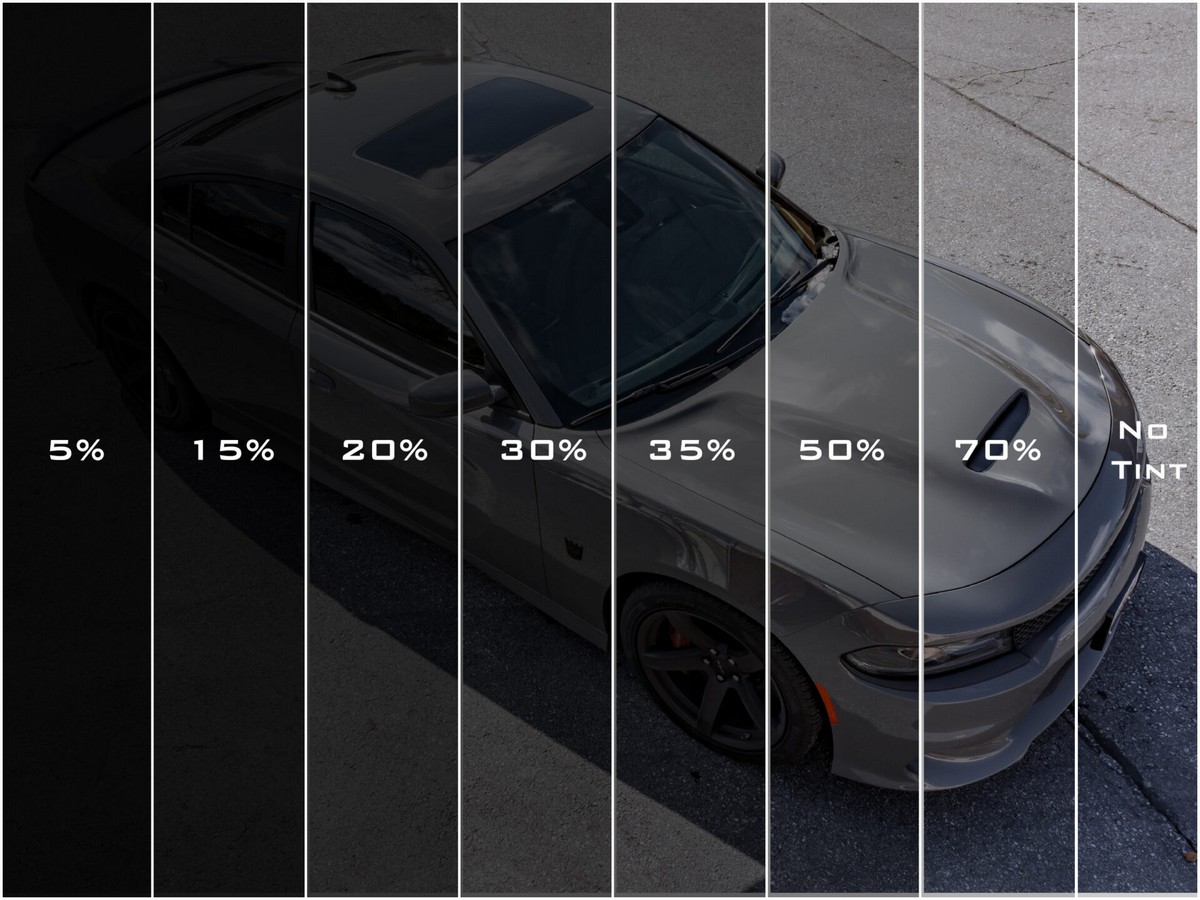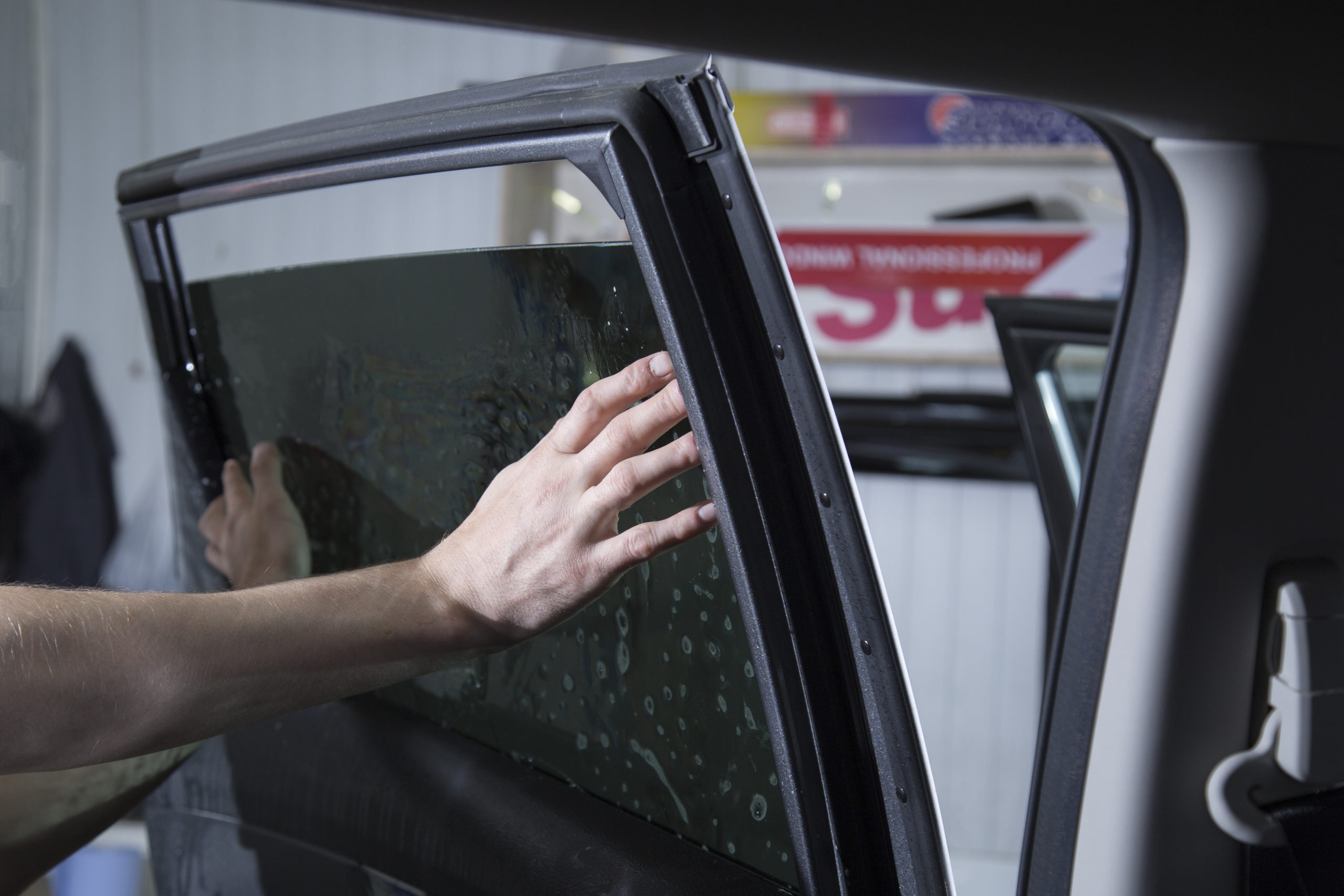The Science Behind Window Tinting: How It Blocks UV Rays and Heat
Wiki Article
Window Tinting Options: Locate the Right Shade for Your Style and Needs
Picking the ideal window tint for your automobile entails a careful factor to consider of numerous aspects, including personal visual appeals, functional requirements, and legal restrictions. With alternatives ranging from light tintss that offer marginal personal privacy to darker shades that boost privacy, the options can be frustrating. window tinting. Comprehending the effects of visible light transmission (VLT) percents and the benefits of various products is vital in making an informed selection. As you consider your options, you may question how these elements interaction to create not just an appearance, but a tailored experience when driving.Understanding Window Tinting Levels
When taking into consideration window tinting, it is essential to recognize the numerous levels of tint offered, as they significantly impact both aesthetic appeals and functionality. Window tinting is classified based on Visible Light Transmission (VLT) percents, which indicate the quantity of light allowed to travel through the glass. The VLT percentage can range from extremely light (over 70%) to extremely dark (listed below 5%)The primary levels of tint consist of clear, which supplies UV security without altering presence; light tint (over 50% VLT), which somewhat minimizes glare while maintaining presence; tool tint (around 35% VLT), striking a balance in between personal privacy and light transmission; and dark tint (listed below 20% VLT), supplying substantial personal privacy and heat decrease however restricting external visibility.
Recognizing these degrees is essential as they can affect driving safety and security, lawful compliance, and individual comfort. Additionally, local policies commonly determine acceptable tint levels, differing by state or municipality. As a result, before picking a color, it is advisable to research and make certain adherence to these policies while thinking about individual preferences for style and practical benefits.
Popular Tint Tone Explained

One of the most preferred choices is the traditional dark tint, generally varying from 20% to 5% VLT (Visible Light Transmission) This shade provides optimum privacy and a streamlined, innovative look. It effectively blocks UV rays and heat, making it suitable for bright climates, though it might restrict visibility in the evening.
On the other hand, lighter shades such as 35% or 50% VLT supply an extra subtle look while still using some degree of personal privacy. These shades are best for those looking for a balance between looks and functionality, as they permit far better visibility and adhere to numerous lawful standards.
Another arising choice is the ceramic tint, which can come in a range of tones - window tinting. It offers exceptional heat being rejected and UV defense without dramatically modifying the automobile's appearance

Legal Laws for Window Tinting
Comprehending the lawful guidelines bordering window tinting is crucial for automobile proprietors looking to tailor their cars. Each state in the U.S. has particular regulations governing the darkness or lightness of window tintss, typically determined by Visible Light Transmission (VLT) percent. VLT refers to the quantity of light that can travel through the glass and the movie combined.In numerous states, laws determine various VLT portions for various windowss, including front windscreens, side windowss, and rear windowss. Some states might enable a tint of 70% VLT for windscreens while permitting darker tintss for back windowss. Additionally, specific states have limitations on reflective tintss, which can produce glow for various other motorists.
Failure to abide by these guidelines can bring about fines, mandated removal of the tint, and read this article raised insurance coverage premiums. Car proprietors must get in touch with local legislations or state DMV sites to guarantee they are within lawful restrictions prior to waging installment. Recognizing these regulations not just assists stay clear of legal effects however likewise makes sure a risk-free driving experience.
Benefits of Various Tint Materials
Discovering the benefits of different tint materials reveals considerable benefits that can enhance both the performance and visual allure of a vehicle. Each material uses distinctive qualities matched to particular demands and preferences.Dyeded window films are preferred for their price and ability to reduce glow. Metalized films, on the other hand, deal premium heat decrease and UV protection due to their reflective properties.
Ceramic window films stand for a premium alternative, providing remarkable heat rejection while keeping exposure. They are non-metallic, hence staying clear of any kind of signal disturbance, and are highly resilient, withstanding scratches and fading over time. In addition, ceramic films do not include dyes, guaranteeing a longer-lasting look.
Lastly, crossbreed films combine components from dyeded and metalized choices, offering a well balanced performance in regards to warm rejection, glow reduction, and price. Each tint product serves one-of-a-kind purposes, enabling lorry owners to select the most effective suitable for their lifestyle and visual choices, eventually boosting their driving experience.
Selecting the Right Tint for You
Discovering the right window tint involves thinking about numerous aspects, consisting of individual choices, lorry type, this website and regional laws. Analyze your personal style and preferred degree of personal privacy, as these will certainly direct your option of tint shade. Darker tintss supply boosted privacy but may not appropriate for all motorists, specifically those who favor a more open feel inside their car.Next, consider your car type, as the size and shape of windowss can affect the performance of certain tintss. Bigger windowss may benefit from reflective tintss that lower glow while smaller sized windowss might be more matched to dyeded films that offer subtle appearances.
In addition, it's critical to inspect local laws relating to window tinting. Many states enforce limitations on the allowable darkness and reflectivity, particularly for front windowss. Conformity with these laws is important to prevent penalties and make sure safety and security.
Finally, evaluate the tint material that ideal suits your demands. Choices consist of dyeded, metalized, ceramic, and crossbreed films, each offering special benefits associating to warmth being rejected, UV defense, and toughness. By thinking about these factors, you can with confidence choose a home window tint that aligns with your style and useful requirements.
Final Thought
Finally, selecting the proper window tint needs mindful consideration of different variables, consisting of VLT percentages, regional laws, and the desired aesthetic. Various tint materials use one-of-a-kind benefits that can enhance car convenience and defense. By thoroughly understanding the i loved this readily available options and aligning them with private choices and functional demands, one can accomplish an ideal equilibrium in between design and capability in window tinting selections.Picking the appropriate window tint for your vehicle involves a careful consideration of various factors, including personal aesthetic appeals, practical demands, and legal limitations. Each state in the U.S. has particular laws governing the darkness or lightness of window tintss, usually gauged by Visible Light Transmission (VLT) percent. Some states might enable a tint of 70% VLT for windshields while permitting darker tintss for back windowss.Discovering the right window tint entails thinking about different aspects, including personal choices, lorry kind, and regional policies.In conclusion, picking the proper window tint calls for cautious consideration of various variables, consisting of VLT portions, local policies, and the desired aesthetic.
Report this wiki page